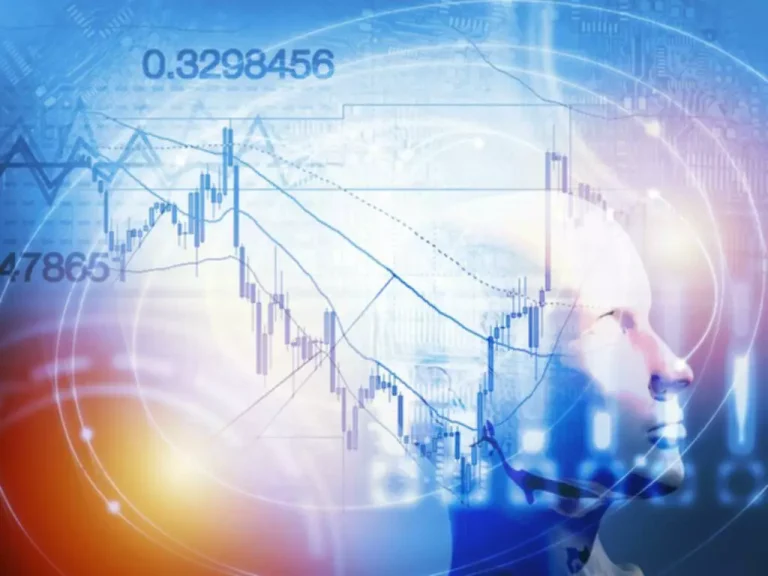Explore India’s rising EV market and prime shares What Is High-Frequency Trading like Tata Motors, Mahindra & Mahindra, Hero MotoCorp, Bajaj Auto, and more. Get full access by signing as a lot as explore all our instruments, portfolios & even begin investing right after sign-up. High-frequency trading remains to be a controversial exercise, with regulators, finance consultants, and teachers disagreeing on its deserves.

Navigating The Rapids: Important Intraday Buying And Selling Indicators For Success
HFT techniques depend on complex predictive fashions that identify momentary pricing anomalies and market inefficiencies. The models are trained on huge historic datasets of ticks, time & gross sales, order guide snapshots, and other market knowledge. Algorithms ingest this information and constantly optimize massive numbers of parameters to detect patterns invisible to humans. These industry-wide profit estimates translate to substantial returns when contemplating the amount of trading capital deployed by HFT companies.
Way Forward For Trading: Algorithmic & High-frequency Tendencies In India
Traders who interact in HFT need to thoroughly understand the intricacies of this specialized trading system and carefully assess all aspects before continuing with their investments. The constant presence of HFT companies out there helps to narrow the bid-ask spread—the distinction between the very best worth a buyer is willing to pay and the bottom price a vendor is prepared to simply accept. In response to these issues, regulators in varied jurisdictions have applied measures similar to velocity bumps and different rules designed to mitigate the potential negative impacts of HFT. However, it additionally introduces new risks and moral challenges that have to be fastidiously managed. As AI expertise continues to evolve, its function in HFT will probably turn into much more prominent, shaping the future of financial markets.
Transparency On Trial: Sebi Chairperson’s Ongoing Icici Earnings Elevate
The perceived proliferation of manipulative and destabilizing HFT strategies has fueled calls for a financial transactions tax to curb extreme speculation. However, this is opposed by the industry as being infeasible or damaging to liquidity. Wider considerations about computerized buying and selling growing systemic risks are another simmering fear amongst regulators. However, there’s little consensus on balancing innovation and stability by way of HFT regulation.
How Does Hft Influence Market Volatility?
- In high frequency buying and selling, particular person securities are constantly assessed to detect even essentially the most minute of tendencies and benefit from it via high-speed and bulk transactions.
- By utilizing predetermined HFT methods to put limit orders to promote or buy, many high-frequency trading companies used market making as an effective strategy.
- Since the prices do not fluctuate often, how can traders reap the advantages of these minimal value fluctuations and make profits out of them using an internet trading app?
- The results excluding intervals around intra-day news are almost similar to these for the complete pattern.
- High frequency buying and selling is a sort of trading in which highly effective computers are utilised to execute large volumes of trades in a very short time-frame.
This includes submitting faux orders to influence market costs after which capitalizing on the subsequent movements. There are additionally considerations about “quote stuffing,” the place huge volumes of orders are despatched to slow the market and create arbitrage alternatives for HFTs. This rigorous approach ends in negligible rates of technical errors or errors for many HFT systems. Large orders are broken down programmatically into exact sequences of smaller orders to keep away from tipping off the market. Sophisticated execution algorithms time every slice to manage market influence and guarantee full-fill rates near 100%.


Traders and Investors commerce in financial markets because they have full faith of their honesty. Repeated occurrences of outstanding market volatility could erode this belief, prompting some cautious buyers to exit the markets totally. Market members participating in algorithmic and high-frequency trading should adjust to stringent regulatory requirements. Adherence to tips associated to risk controls, market access, and reporting is essential to take care of market integrity. The velocity and interconnectedness of algorithmic and high-frequency trading can amplify market volatility and pose systemic risks.
Excessive Frequency Trading Explained In Easy Phrases
HFT’s speedy evaluation and execution capabilities contribute to environment friendly worth discovery. By processing vast amounts of market data and reacting swiftly to news and occasions, HFT algorithms assist prices reflect related information accurately and in a well timed method. HFT operates in highly competitive environments, where milliseconds matter. To be successful, HFT firms make investments heavily in high-speed information connections, co-located servers near exchanges, and superior trading applied sciences to attenuate latency.
Algorithmic buying and selling allows market individuals to execute trades at a much faster pace than traditional guide buying and selling methods. This speed advantage can lead to improved commerce execution and reduced latency, leading to higher worth discovery. These algorithms mechanically execute trades primarily based on predefined criteria, corresponding to worth, volume, or timing. The primary goal of algorithmic buying and selling is to boost trading effectivity and scale back transaction costs.
Algorithms reacting to market movements and engaging in rapid buying and selling can contribute to sudden and sharp worth fluctuations, potentially leading to increased market instability. HFT corporations actively participate available within the market as market makers, providing liquidity by continuously inserting purchase and promote orders. This helps ensure that there’s a prepared marketplace for consumers and sellers, enhancing overall market liquidity. High-frequency buying and selling driven by subtle algorithms has some distinct features that make it stand out from different kinds of automated trading.
What’s more, the algorithms used in a high-frequency trading strategy additionally play a key role in scheduling orders and sending them into the market. They analyse live market feeds, pinpoint helpful trading alerts and even establish the optimal entry or exit factors for a trade. In conclusion, market making and HFT are integral to the liquidity and effectivity of economic markets. Understanding the roles, mechanisms, and financial rules behind these practices is essential for anybody involved in or interested in the dynamics of recent trading and funding. Market making and high-frequency buying and selling (HFT) are pivotal parts of modern financial markets, offering liquidity and facilitating environment friendly market operations. Despite their significance, misconceptions about these practices are widespread.
This blog addresses high-frequency buying and selling methods, methods, and controversies, after which analyzes present and potential legal guidelines and laws and their impacts on the market. Speed is an important a half of high-frequency buying and selling because the alternatives that this buying and selling strategy aims to take benefit of can be found only for transient moments — often just milliseconds or microseconds. Sophisticated algorithms make it possible to capitalise on such market strikes as a end result of they’re designed to act on trading alerts within a fraction of a second. These speeds far surpass the potential of manual order execution and buying and selling. Then, through the use of advanced mathematical fashions and statistical strategies, such algorithms generate buy or sell indicators based on pre-set standards.
High-Frequency Trading (HFT) is a trading technique that utilizes superior expertise, algorithms, and high-speed execution to capitalize on minor price discrepancies out there. While it provides advantages such as increased liquidity and environment friendly price discovery, it additionally presents dangers and potential disadvantages. Striking a stability between technological advancements and market integrity is essential for fostering a fair and environment friendly trading surroundings.
Read more about https://www.xcritical.in/ here.
